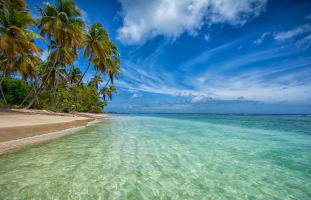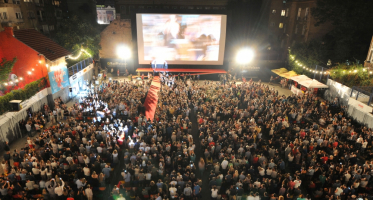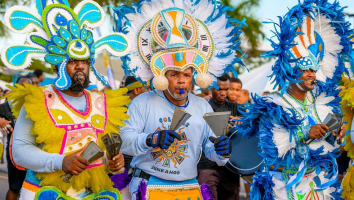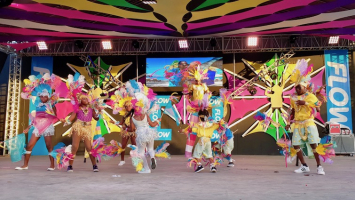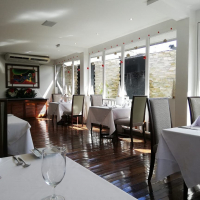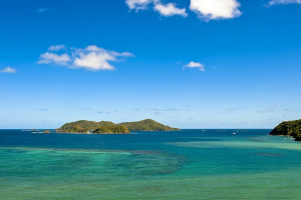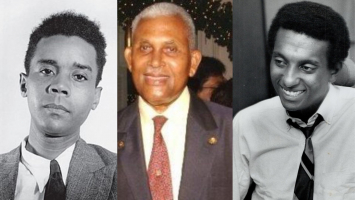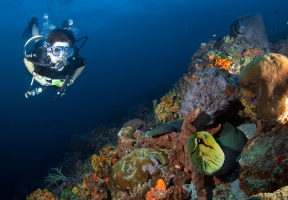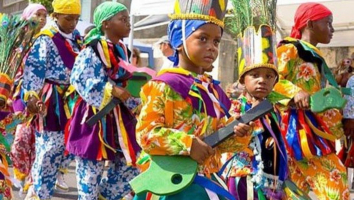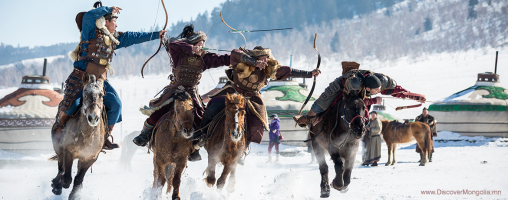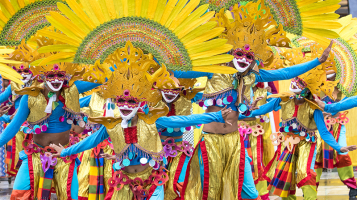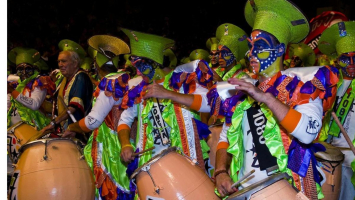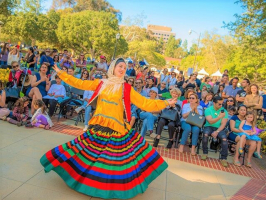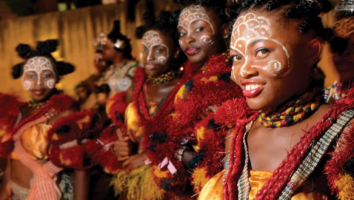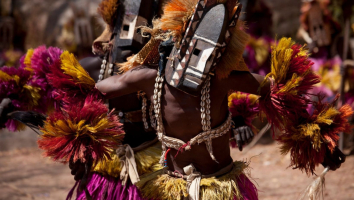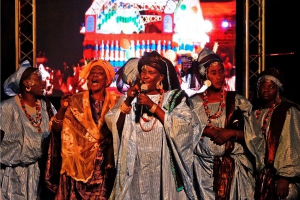Top 10 Most Famous Festivals in Trinidad and Tobago
Carnival comes to mind when one thinks about Trinidad and Tobago and celebrations, with its brilliant colors, costumes, and soca music that envelop the islands ... read more...throughout the first months of the year. However, Trinidad and Tobago's rich cultural diversity, which includes influences from Indian, African, European, Spanish (Hispanic or Latino), Chinese, and Arabic cultures, results in an eclectic mix of unique and intriguing festivals found nowhere else in the Caribbean that will leave you speechless, move you spiritually, and provide unforgettable experiences. The 10 most famous festivals in Trinidad and Tobago that are worth attending are given below.
-
Each year in March, the Hindu community celebrates Phagwa or Holi, a sacred celebration. However, as with so many observances in the multi-ethnic, multi-religious society, Phagwa is observed by the general public. Celebrities dressed in white are sprayed with "abeer", a mixture of colorful dyes and water. Holi comes from the Sanskrit term Holika, which means "parched grains." While this celebration has somber religious importance as a process of cleansing to promote good health, the happy environment is created by the flinging of brilliant colored powder and liquid, as well as exuberant singing and dancing. Phagwa festivities may be seen all around Trinidad, and the enthusiastic participants will gladly ask you to join them!
The love narrative between two Hindu gods, Radha and Krishna, is claimed to have inspired the ritual of flinging vividly colored powder and water. Krishna is known for having brilliant blue skin, and tradition has it that he was disappointed that he didn't have the same light complexion as Radha. When he informed his mother about it, she recommended that instead of longing for fair skin, he should smear paint on Radha's skin so that they would both be colored; thus the Holi tradition of attempting to 'color' people as a symbol of affection. The powders' colors have symbolic implications. Blue is the color of Krishna, red is the color of love and fertility, green is the color of spring and fresh growth, and yellow is the color of turmeric.
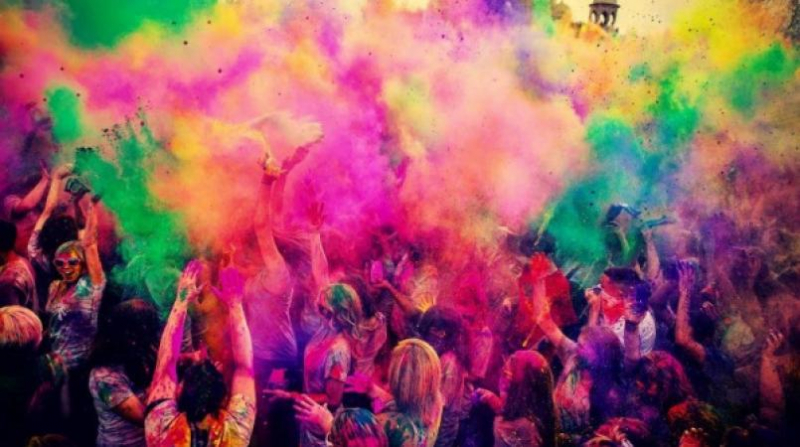
Source: tt.loopnews -
Tobago Jazz Event is an annual jazz festival held in Plymouth, Trinidad, and Tobago, that draws approximately 20,000 tourists, according to the Tourism Minister. Every April, the Tobago Jazz Experience event brings jazz and global music from all over the world to various sections of Tobago. Jazz, world beat, salsa, Latin, R&B, soca, calypso, reggae, and many other genres of contemporary music are included throughout the course of eleven days. For the Tobago Jazz Experience, Jazztafarians or Jazzphiles from all over the world gather on the lesser-known island of the TnT combination. It's going to be a blast.
The festival provides guests with a unique opportunity to enjoy jazz, cultural heritage, local culinary delicacies, and a historic viewpoint that includes music, scenery, and ambiance. The festival takes place all around the island, so it's a terrific opportunity to visit an area of the Caribbean that's frequently missed, and it's not just about the music. There's cuisine, art, and even yoof classes. So, take your sunscreen and your passport, and head to Tobago.
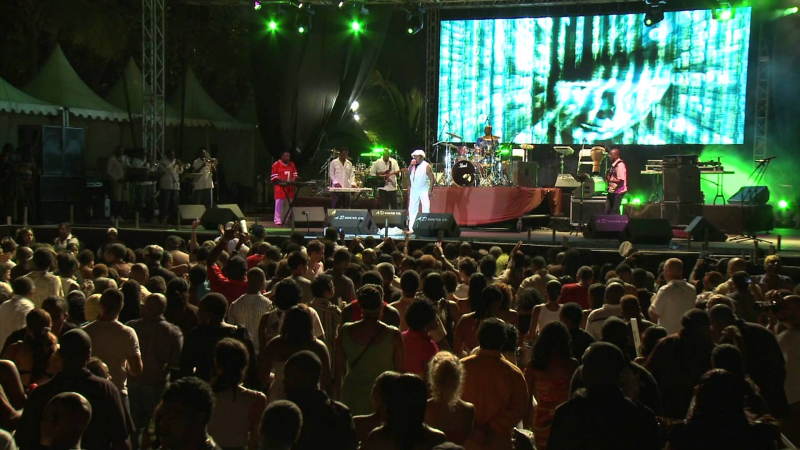
Source: tt.loopnews -
Tobago Heritage Festival is an important national festival and one of the most famous festivals in Trinidad and Tobago, particularly on the island of Tobago. The festival, which runs from mid-July to early August, is an annual celebration of Tobago's cultural history via dance, song, music, and food. Tobagonians travel on a pilgrimage to their forefathers' cultural heartland during this period. Participants may expect a thrilling spectacle that not only represents the spirit of its people but also attracts and delights thousands of spectators.
The plays are situated in Tobago's charming and scenic towns, which adds to the realism of the productions while also allowing tourists to explore the island as they go from one location to the next. To the joy and enchantment of guests, many events will be placed at night beneath the canopy of star-lit sky and warm moonlight nights.
Throughout the Heritage period, tourists and locals may explore the many facets of the island paradise's past by visiting the numerous charming and welcoming settlements that dot the island paradise. The indigenous traditional art forms that are at the core of this island are performed every day and night. Patrons may enjoy traditional culinary delicacies as well as pulsing rhythms and dances, as well as a variety of oral traditions.
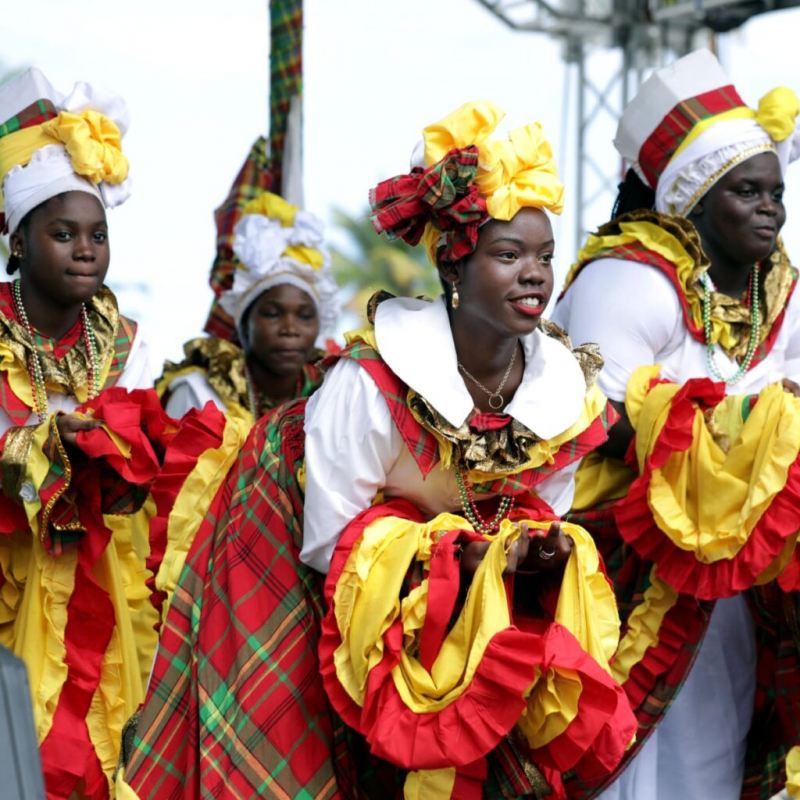
Source: tha.gov.tt -
Shi'a Muslims all throughout the world celebrate Hosay, an Islamic feast. The festival was first brought to Trinidad in 1845. Despite being referred to regard as a festival, Hosay isn't one in the literal meaning of the word. Because it is a time of mourning for the martyred in many Islamic nations, this practice takes on a more somber religious tone. According to the Islamic lunar calendar, Hosay lasts four days and takes place in April, May, or June.
The martyrdom of the Prophet Mohammed's grandsons Hassan and Hussein in the Battle of Kerbala in Persia is commemorated by Hosay. The celebrations begin on Flag Night, with the first parade. Hundreds of believers parade multi-colored flags through the streets to commemorate the start of the Battle of Kerbala, in which the brothers perished
.
The celebrations in Trinidad have grown to encompass people of various colors, faiths, and walks of life. The main celebration takes place in St. James, a Port of Spain district, although Hosay processions may also be seen in Curepe, Tunapuna, Couva, and Cedros. No matter where you go to see this celebration, keep in mind that alcohol is not permitted due to its religious significance.
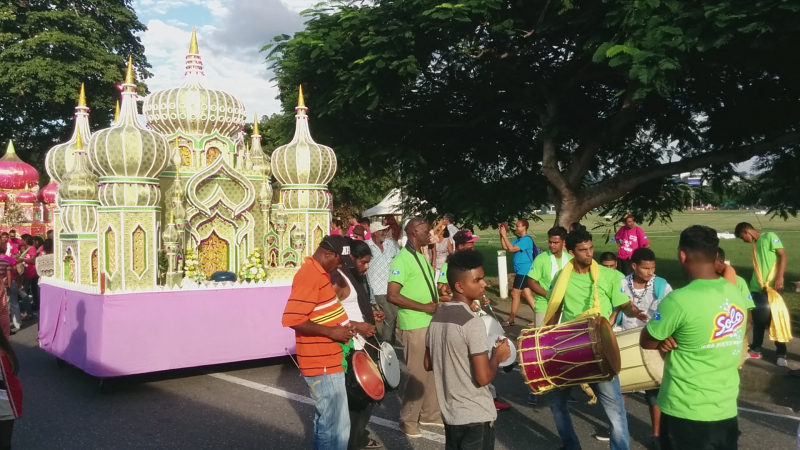
Source: destinationtnt.com 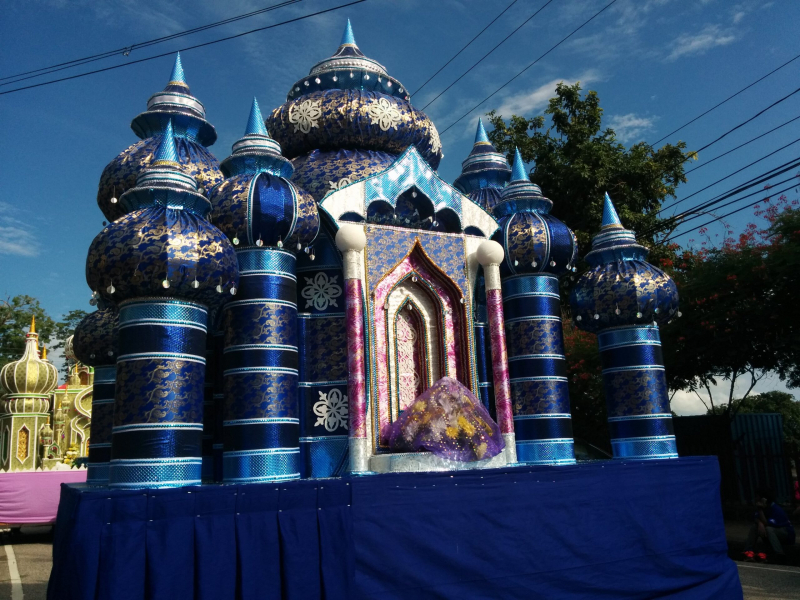
Source: destinationtnt.com -
Before the turn of the century, East Indians introduced the Hindu holiday of Divali, which Trinidad and Tobago lovingly refer to as the Festival of Lights. This is their largest Hindu festival, which takes place in the Hindu calendar month of Karthik (October-November). On what is supposed to be the darkest night of the year, this national holiday is observed.
Hindus usually observe Divali on a huge scale and in a spectacular manner, beginning with a Lakshmi Pooja. At twilight, everyone helps in lighting and putting the Deyas about the home and yard, and celebrants typically invite relatives and friends to share a magnificent vegetarian lunch. Hundreds of brightly flashing lights in various places and patterns make for a spectacular picture!
Many Hindu temples and community organizations across islands organize their own Divali celebrations, which you may see in the weeks leading up to the actual day. This is a celebration that will strike your heart because, at its core, it is a narrative of good triumphing over evil, about light triumphing over darkness.
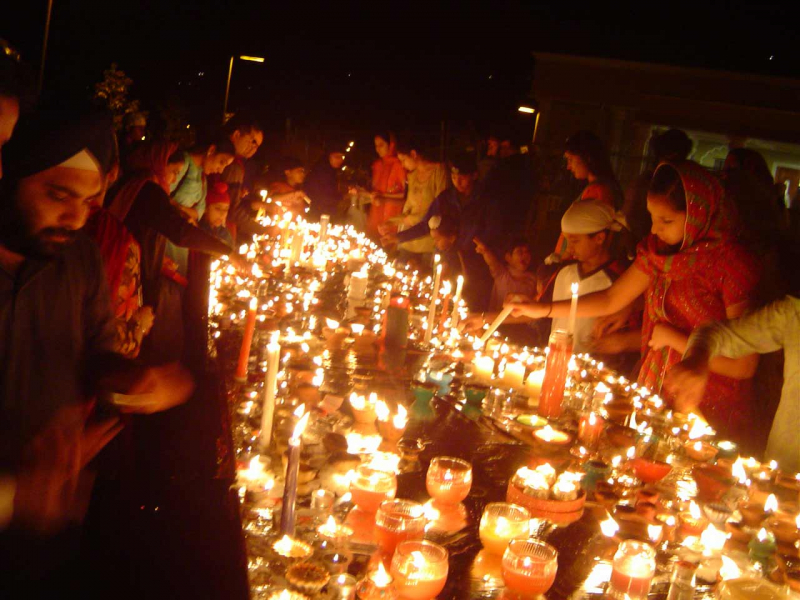
Source: repeatingislands.com -
Tobago Blue Food Festival has become one of the most famous festivals in Trinidad and Tobago as well as a well-known event on the island's calendar throughout the years. Furthermore, CNN named it one of the top cuisine festivals in the world. Every year in mid-October, a little beach community in Trinidad and Tobago called Bloody Bay celebrates the flexibility of dasheen taro. Locals congregate to sell their one-of-a-kind ice creams, sauces, and liqueurs produced with this 'blue' cuisine. Visitors may try excellent dasheen dishes cooked by local cooks while listening to reggae music or experience the island's famed rums.
The dasheen is the highlight of the Tobago Blue Food Festival, which has been hosted yearly for the past two decades. The blue root dasheen is a vegetable that is used in appetizers, meals, sweets, and liqueurs during the festival. Attendees may sample a variety of dasheen meals as well as see culinary demos and competitions while being entertained by prominent local artists. The day's events attract visitors from all across the country and include samplings, live entertainment, demonstrations, children's zones, and much more.
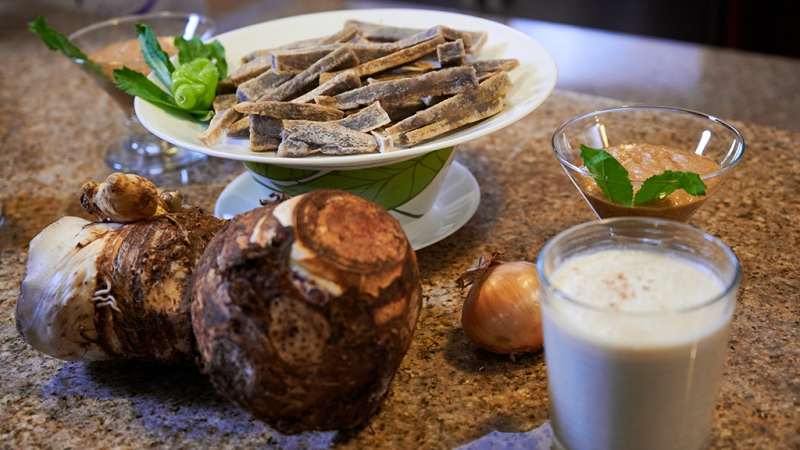
Source: tt.loopnews.com 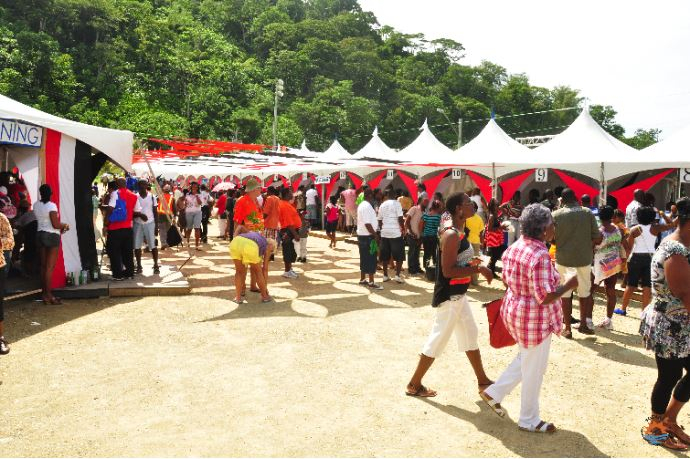
Source: caribbeanandco.com -
The Santa Rosa Event is possibly the oldest indigenous festival currently observed in Trinidad and Tobago. The Caribs of Arima, according to legend, originated the festival over 300 years ago. It all started with three Caribs who saw a vision of Rose of Lima, the first person from the New World to be recognized as a saint by the Roman Catholic Church. The patron saint of Arima is Santa Rosa de Lima. The saint's true feast day is August 20th. The statue of the saint is artistically arranged and shown to the public at the Santa Rosa RC Church on the last day of the festival.
Santa Rosa Festival is held in August, in the week preceding Independence Day (August 31), with the goal of paying honor to the New World's First Peoples and exposing their culture to the rest of the country. The crowning of the Carib Queen, an elder matron of their community who serves as a focal point for their heritage and traditions; a church procession and performance of some of their traditional and ritual activities, such as smoke ceremonies and prayer; and the opportunity to see and purchase cassava bread are all part of the ceremonies.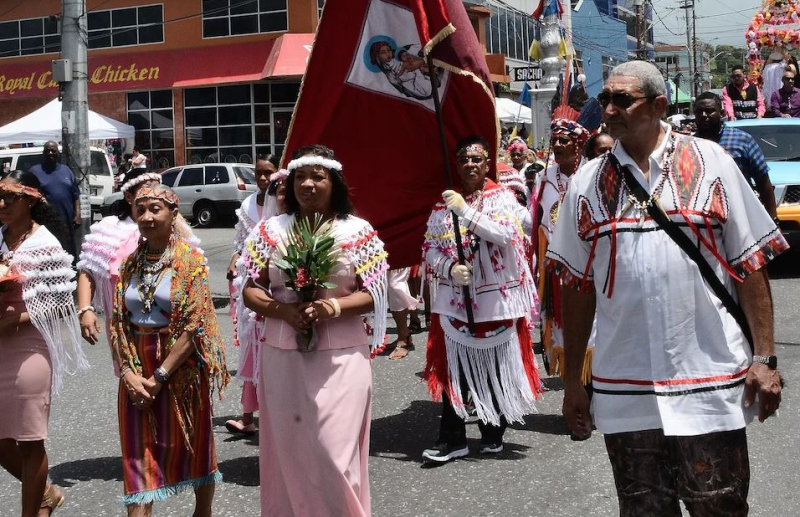
Source: catholictt.org 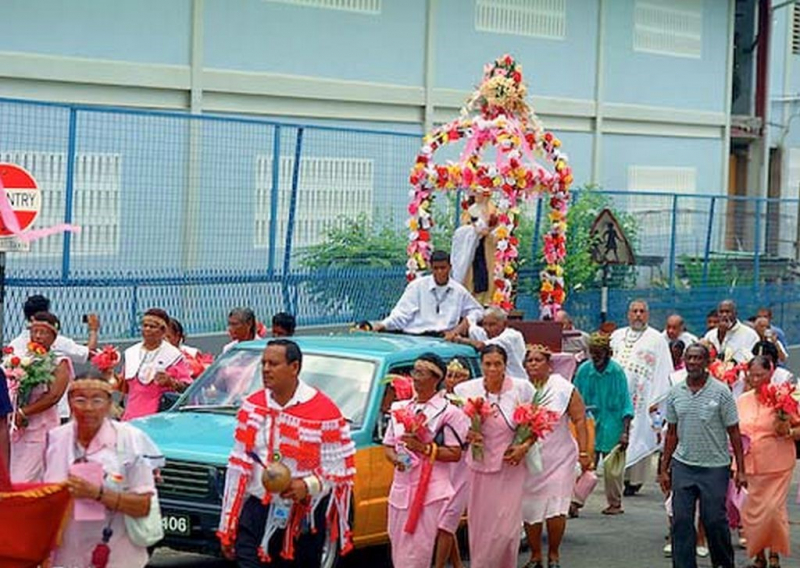
Source: haikudeck.com -
Every year on the 14th of October, Trinidad and Tobago remembers the First People's Community. Although the Santa Rosa First Peoples Community is well-known, it is not Trinidad's sole First Peoples community. Other groups exist, such as the Warao nation. The Santa Rosa First Peoples chose to commemorate their ancestors as descendants of Trinidad's indigenous Nepoyo and possibly Carinepogoto communities through a series of spiritual rites as well as a week of public cultural activities and exhibits. We have the genuine deal: both the government and our indigenous people have acknowledged this group as their official representatives. This designates them as the community's official cultural ambassadors, which is critical if we are to guarantee that their culture is passed down to future generations and the general public.
Why is this important to Trinidad and Tobago as a nation? Prior to the arrival of conquerors, the First Peoples lived in Trinidad for thousands of years. Today's celebrations are more than just a continuation of a cultural rebirth that began in the 1990s. This is a unique chance for all of us to reconnect with a part of our history that has been pushed to the margins of knowledge by Eurocentric history books and school curricula. Their open exhibits (and invites) provide the rest of T&T the opportunity to see, participate in, and learn about new facets of their heritage.
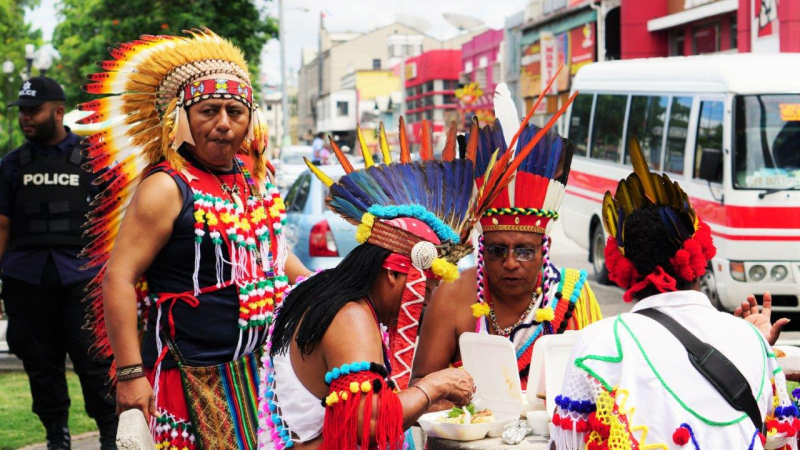
Source: tt.loopnews.com 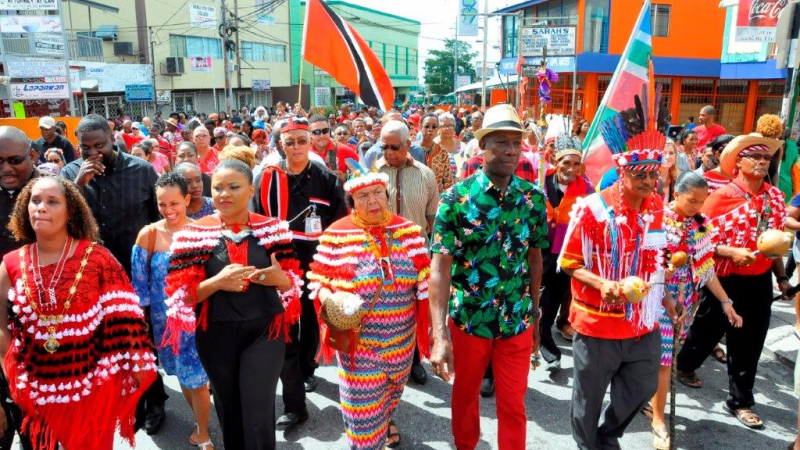
Source: tt.loopnews.com -
From Rio de Janeiro and New Orleans to Notting Hill, many cities brag of stunning Carnival celebrations. Nothing, however, compares to the thrills, excitement, drama, and real art of making mas' in Trinidad and Tobago. Carnival in Trinidad and Tobago last two days and is not an official public holiday, but it seems like it since practically everyone is out on the streets dancing, 'jumping up,' 'wining down,' and generally having a good time. These raucous parties were, believe it or not, religious in nature, as revelers were given one final chance to enjoy themselves before the rigors of the Lenten season. The 'bacchanal' began in this manner, as a tribute to the deity Bacchus, Lord of Wine and Revelry.
A national event was once a wild frenzy reserved for the masses, with the upper classes opting to observe rather than participate. Many of our traditional Carnival characters, such as Dame Lorraine (a well-endowed woman), Jab Jab (a devil-like creation that would threaten you jokingly with horns and a three-pronged fork), Pierrot Grenade (like a Greek chorus, commenting on current issues in rhyme), and Midnight Robber, all of which are still popular portrayals to this day, were born during these days.
Although Carnival is strictly defined as the Monday and Tuesday preceding Ash Wednesday, the festivities begin just after Christmas – since there is nothing strict about Carnival. Radio stations start blasting the newest tunes of the next season - the season of the body - almost as soon as the holy observance of Christmas Day is completed. In reality, the phrase Carnival comes from the Latin Carne Vale, which means "farewell to the flesh."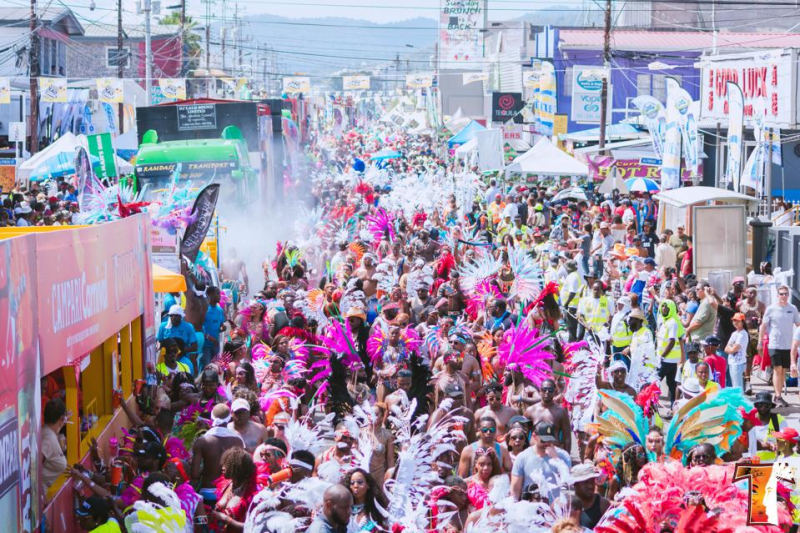
Source: forbes.com 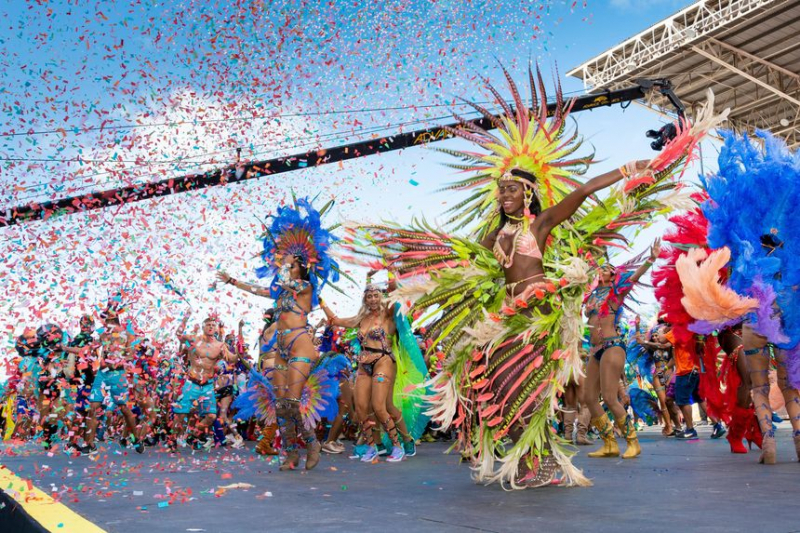
Source: wsj.com -
While Easter is a worldwide religious holiday, it is commemorated in Trinidad and Tobago by two public holidays: Good Friday and Easter Monday. The devout attend church services, pay visits to relatives and eat lavish dinners with their families. Our Good Friday menu is renowned - whether you are Christian or not, most of us must have a Hot Cross Bun before or after our lunch! Nothing, however, compares to the Easter Sunday dinner offering, which commemorates Christ's resurrection. The food is generally extravagant, with baked ham or roast chicken and all the fixings. Because Easter Monday is also a holiday, you may relax, go to the beach, or simply remain at home and eat the leftovers!
If you're lucky, you could see the Good Friday 'Bobolee,' an effigy representing Judas Iscariot, the disciple who betrayed Christ, being beaten. Chocolate eggs, bunnies, and chicks appear in stores, as they do in most other regions of the world, and Easter egg hunts are popular.
Easter bonnet parades are staged in the weeks leading up to Easter, and various competitions are organized around the islands, with young girls having a great time modeling their unique creations for all to see and admire. You are always invited to participate in anything Trinbagonian!
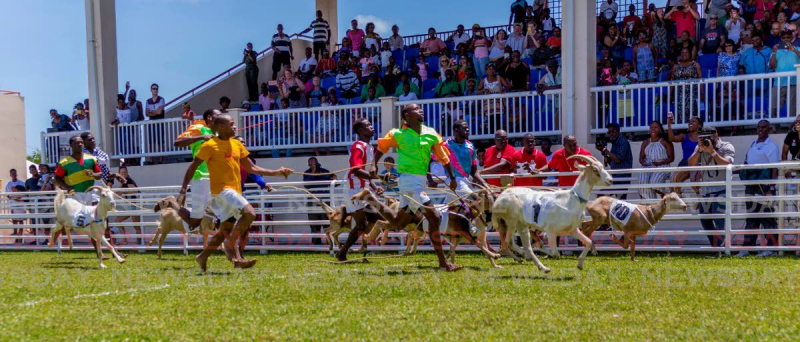
Source: newsday.co.tt












